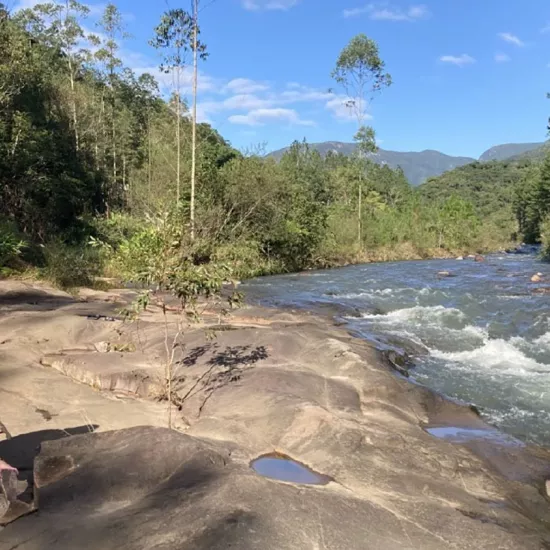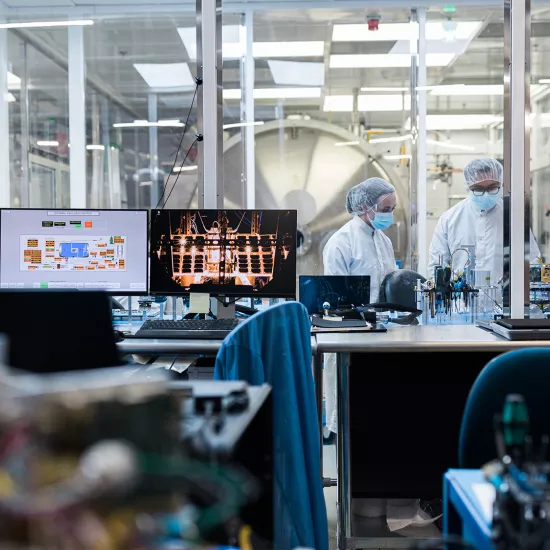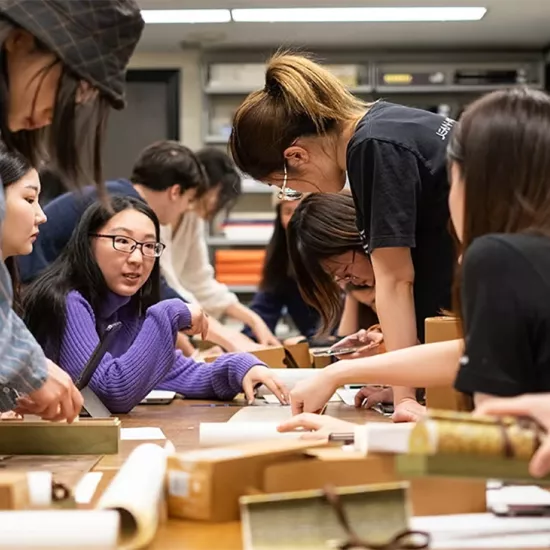Basketball levels the playing field between faculty, staff and students

Jonathan Hersh’s voice rises over the sound of running feet and high tops squeaking on the hardwood floors of the RAWC’s gym. “Left side! Left side! Watch the open man! Push-push-push!” Eight players pound from one end of the court and back again, spinning, passing and shooting at full speed.
IT specialist Ramon Olmedo grabs a rebound and powers towards the basket; just before he shoots, Abdul Qadree, a master’s student in chemistry, slaps it out of Olmedo’s hands. Qadree sprints down the court, unprotected, and makes the shot—he misses, but hangs one-handed off the basket, just as Muhammad Murtaza Hassan, a PhD student in chemistry, nails the rebound shot, earning shouts and applause.
It’s noon at the RAWC, and as they do every week, this group has gathered to play pick-up basketball in the gym. But it’s no ordinary team—on the court are faculty members, graduate students, campus staff and even UTM alumni, drawn together by nothing more complicated than the love of sport.
At the centre of it all is Professor Andrew Beharry. Off the court, Beharry is an assistant professor of bio-organic chemistry, but at this moment, he’s most recognizable as the guy wearing the Golden State Warriors tank and shorts. Beharry became a Golden State fan while doing postdoctoral work at Stanford University, but it was once he came to UTM and saw others playing basketball that he decided to come in early and shoot hoops.
One morning, he met Hersh, a staff member at the Mississauga Academy of Medicine, who was taking a break while shooting lay-ups and started catching Beharry’s rebounds. Hersh offered to start coaching Beharry, and soon they were meeting three times a week to practise drills and play one-on-one games. Beharry’s skills improved, and after a few months he decided to join some of his graduate students, eventually signing up to play on a co-ed team with both undergrads and grads. He admits that he was a little nervous. “Our roles are flipped at the gym,” he says. “It’s great to have them accept me in that crowd.”
Beharry wasn’t the only one who initially felt intimidated. During a water break, second-year master’s student Nima Gharibi, who works in Beharry’s lab, admits that when his “boss” first joined the team, it made him nervous. “The first two weeks playing with my professor, I wasn’t playing my full game,” he laughs. “But after I fouled him a couple of times, I started playing at 100 per cent.” Now, he says, distinctions between them disappear as soon as they step on the court, and neither would want to miss a game.
Beharry says he feels edgy on the days he can’t get to the gym. “Mentally, it’s done tremendous things for me,” he says. “I’ve lost 35 pounds…I can think more rationally, there’s a sense of calmness.” He’s even stopped smoking, because he knows that cigarettes will leave him breathless on the court.
Gharibi agrees about the benefits of sport beyond the gym. “When things may not be going your way in the lab, [being active] changes your cognition,” he says. “It cleans your mind. Mentally, you become healthier.”
Back at the RAWC, Beharry drains a shot from near centre court. “Back on D!” yells Hersh. “Take it back—let’s go!” Spinning on one foot, biology professor Ingo Ensminger feeds it to Beharry, who sinks it from the right side of the basket. “The Professor!” Hersh cheers, but on the hardwood, the lines between faculty, staff and students blur—everyone is on the team.
Editor's note: The Department of Recreation, Athletics and Wellness, as part of the Student Affairs and Services portfolio, is proud of stories like these. SAS supports every opportunity for our students to learn, to practice healthy lifestyle choices and to build resiliency to assist in life’s many challenges. When faculty members like Professor Beharry share their stories they model resiliency for others. Numerous studies support the ability of sport and recreation to build capacity and develop health awareness in young adults, allowing students to learn from their professors outside of the classroom or lab environments.



